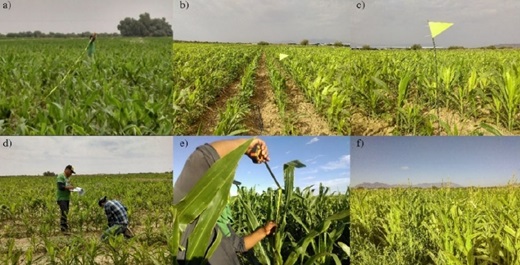Harvest Estimation of Forage Corn (Zea mays L.) by Means of Spectral Indices Derived from LANDSAT-8 and SENTINEL-2
DOI:
https://doi.org/10.28940/terra.v41i0.1696Keywords:
biomass, crop phenology, vegetation indices, yield, remote sensingAbstract
Crop yield estimation based on spectral indices is crucial for decision-making in agricultural activities; however, questions regarding their usefulness persist. The aims of our research were: 1) to relate the radiative properties of forage corn (FC) and biomass production using LANDSAT-8 and SENTINEL-2 images; and 2) to select the best-performing vegetation index (VI) to model FC yield under similar conditions. The study was conducted along the PV-2019 cycle with morphological measurements at different FC growth stages and with destructive random sampling at 72 dds to determine biomass magnitude in the laboratory. Biomass data were then related to reflectance values and VI’s from LANDSAT-8 and SENTINEL-2 to estimate yield through multiple linear regression. Eight VI’s (NDVI, TVI, TTVI, RDVI, RVI, RATIO, SAVI, MSAVI2) were evaluated through cross-evaluations based on key statistics. The results of multiple regression analysis indicated that the best model (R2 = 0.66) was obtained with SENTINEL-2 image data from bands 3 (α3 = 0.54-0.57 µm) and 8 (α8= 0.78-0.90 µm) with highly significant βi estimators (P < 0.05). Moreover, RDVI showed the best performance due to a good spatial relationship between raster digital values and green biomass yield produced with an association of 75.41%, the statistical indicators were R2= 0.75 and CME =17. Yield at 72 dds was predicted both with Multiple Regression Models and VI’s in a range of 10.7 - 57.01 Mg ha-1. In conclusion, SENTINEL-2 outperformed LANDSAT-8 as a free tool for crop assessment and biomass estimation due to its better spatial and temporal resolution.
Downloads
Publication Facts
Reviewer profiles N/A
Author statements
- Academic society
- Terra Latinoamericana
- Publisher
- Mexican Society of Soil Science, C.A.

















